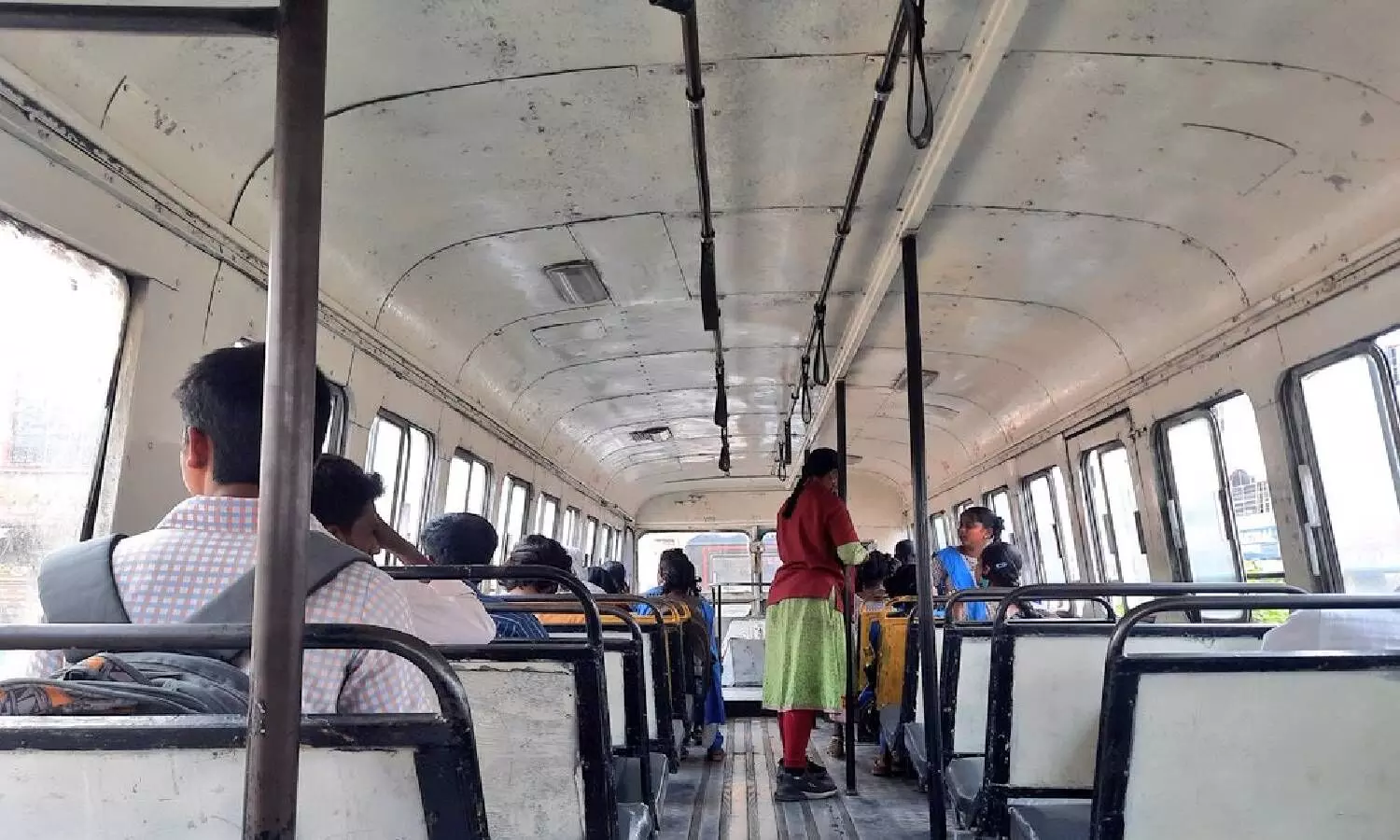Explained: How TSRTC bus fare hike may wean away dedicated commuters
After TSRTC announced an 'adjustment' in fares due to the rising diesel prices, people who change multiple buses in a day are paying almost Rs 15 extra for each trip.
By Amrutha Kosuru
P Lalith, a student of Osmania University, frequently opts for Telangana State Road Transport Corporation (TSRTC) buses to travel around the city.
After TSRTC announced an 'adjustment' in fares due to the rising diesel prices, people who change multiple buses in a day are paying almost Rs 15 extra for each trip. "I have to change two buses to go to Lingampalli from Osmania University. Usually, the trip used to cost me Rs 40. Now, both the bus tickets are coming up to Rs 50-55," Lalith says.
This adjustment has also led to increasing in Rs 150- 200 for all monthly and student bus passes. Lalith, who was shelling out Rs 1100 per month now pays Rs 1300.
TSRTC has been levying a cess on passenger fares from April 9. This effectively increases the bus fares by Rs 5 for each trip. After the rise, the TSRTC bus fares are more expensive than Bangalore buses.
Graph explaining the variation in TSRTC and Bangalore Bus fares
While the diesel cess is only Rs 2 in Pallevalegu, due to TSRTC's existing policy of rounding fares to the nearest multiple of Rs 5 has further increased the charges.
Prashanth Bachu, an Urban Transport Specialist who works as an advisor to transit agencies and governments across the country said that many passengers in the city take multiple buses to reach a destination.
Thus, they are effectively paying 25% – 40% more even if the price increase is only 20% more. "Though the ticket price was hiked by 20%, the TSRTC's revenue would at best go up by 10-12%. This shows that the bus ridership reduced by 5 - 10% or possibly more," he says. However, TSRTC Managing Director said that they have received 3.16% more passengers after the hike in the state and are expecting more passengers after the festival.
He pointed out that ticket fares can be increased only when the occupancy ratio (OR) in buses is over 75%. The OR in Greater Hyderabad was just about 65%. In such a scenario, reducing the bus fares is a better strategy to increase revenue.
"For example, Bhubaneshwar city transit agency reduced fares by 10-20% in December 2019. As a result, the average ridership went up by 18 % in the first month itself, resulting in an increase of revenue by 8%" he explained.
Bus fares after Diesel Cess in TSRTC in comparision with Bangalore buses
Prashanth said the TSRTC's decision to increase prices will adversely affect them in the longer run. People who shifted out of the bus will now travel by private vehicles thus increasing congestion on the roads. This leads to buses not being able to complete their trips on time and deteriorating the quality of service.
"Reliability of service and affordability are key to choosing a particular travel mode. The current fare increase is an ill-thought-of strategy for the turn-around of TSRTC," he said.
TSRTC Managing Director VC Sajjanar said that the corporation currently has 9600 buses across 97 depots